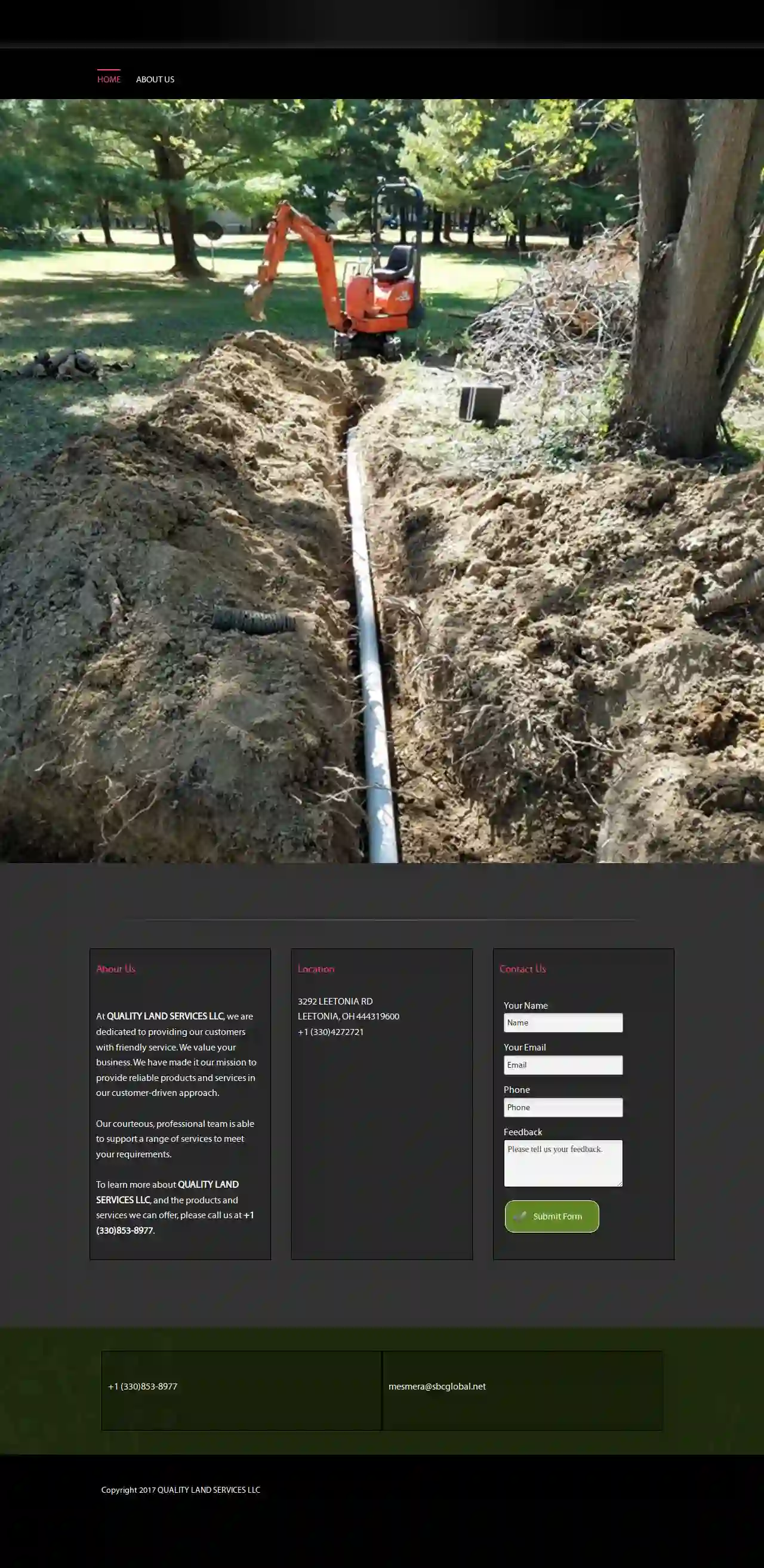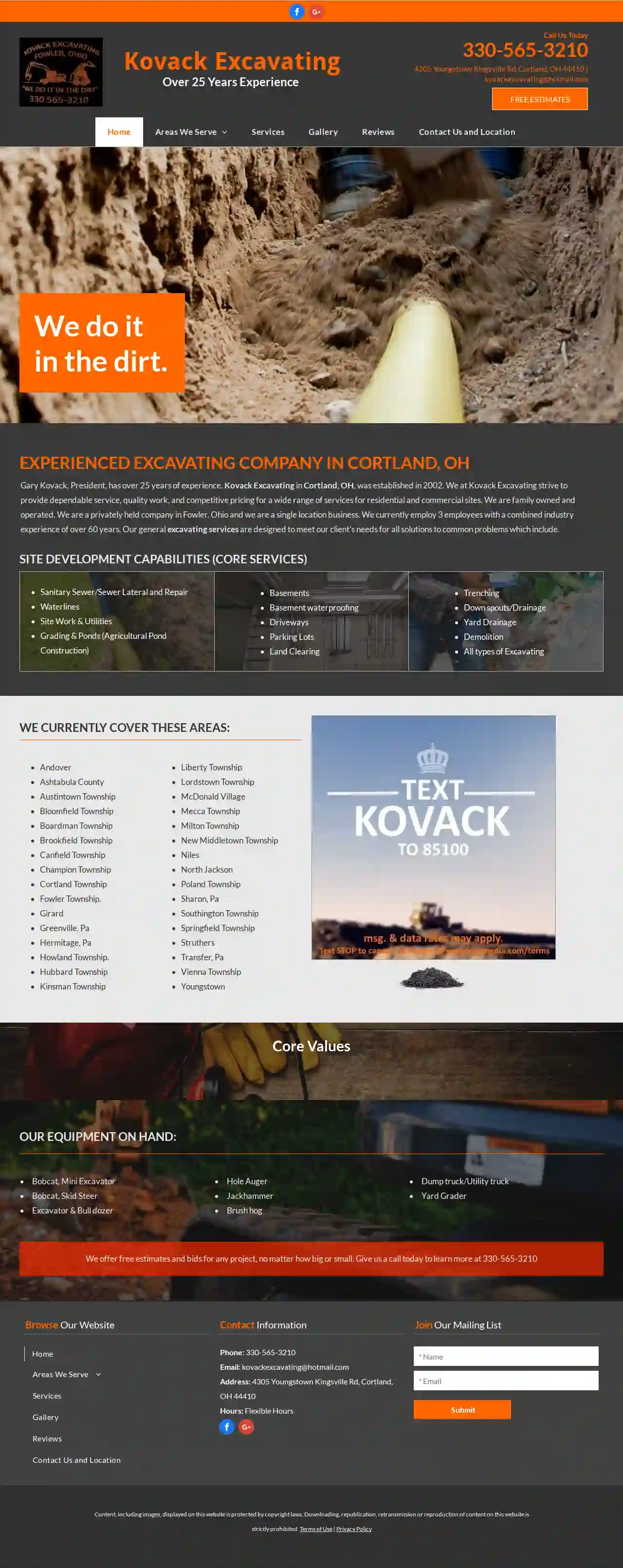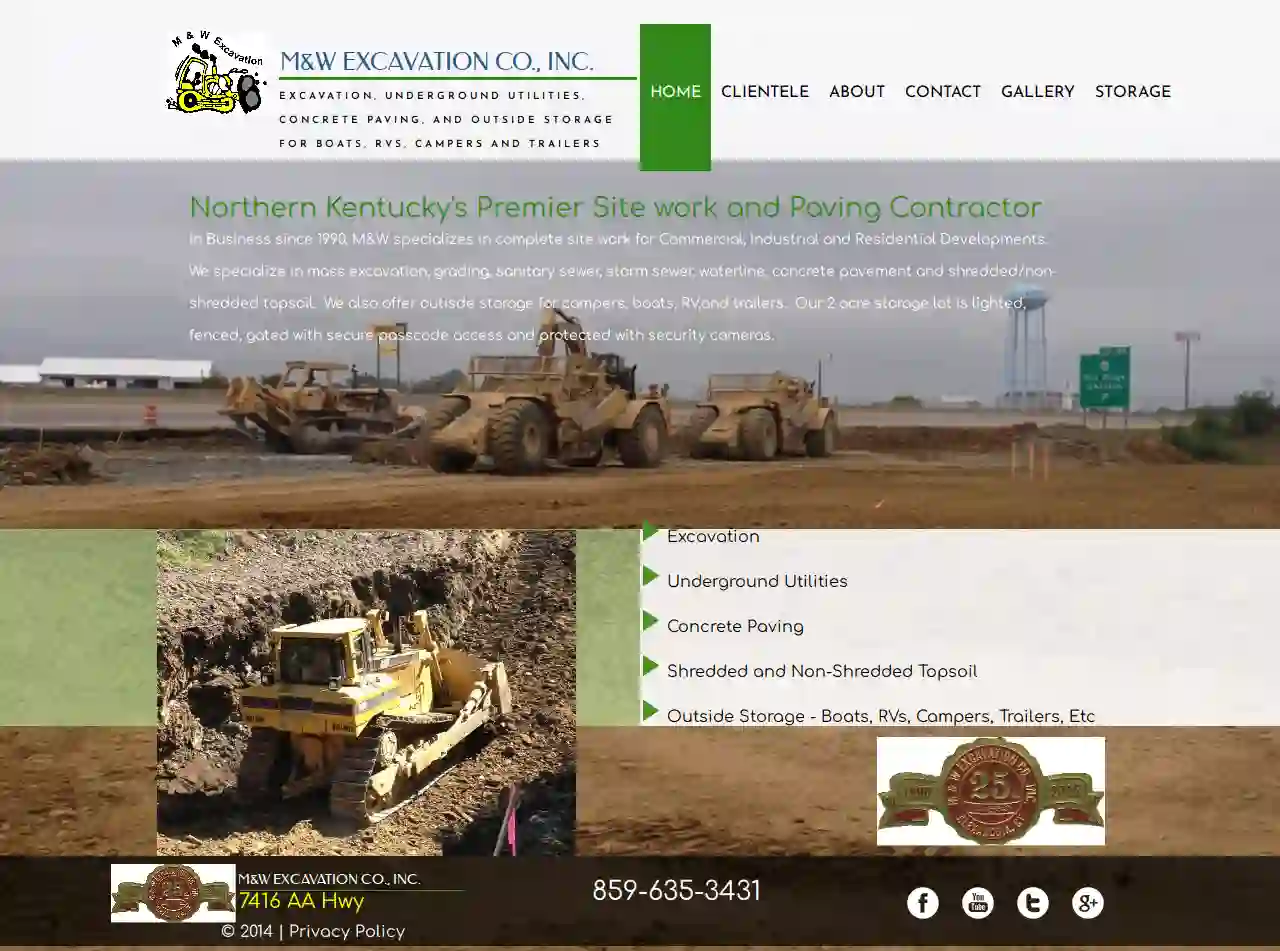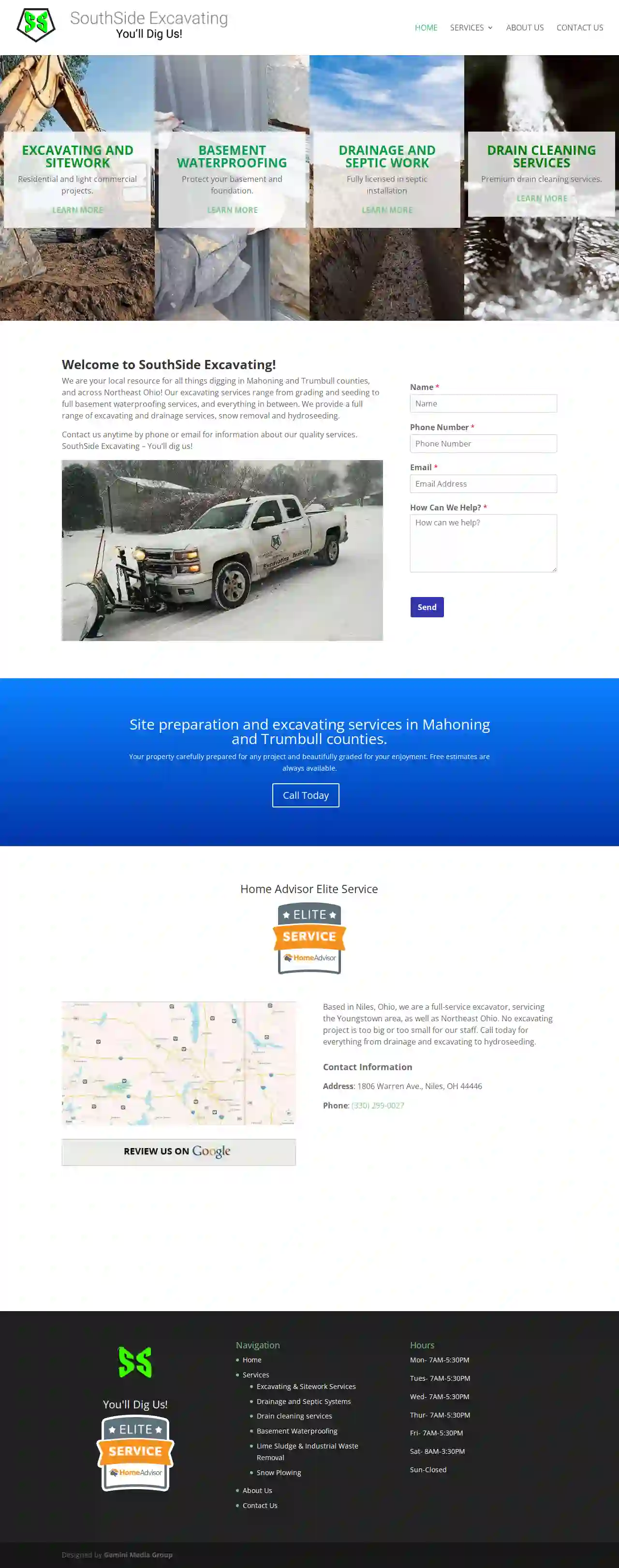Excavation Contractors Massillon
Find top Excavation Companies in Massillon
Get up to 3 Excavation Contractors quotes for your project today! Compare profiles, reviews, accreditations, portfolio, etc... and choose the best deal.

Quality Excavating
3.52 reviews3292 LEETONIA RD, LEETONIA, 44431, USAt QUALITY LAND SERVICES LLC, we are dedicated to providing our customers with friendly service. We value your business. We have made it our mission to provide reliable products and services in our customer-driven approach. Our courteous, professional team is able to support a range of services to meet your requirements. To learn more about QUALITY LAND SERVICES LLC, and the products and services we can offer, please call us at +1 (330)853-8977.
- Services
- Why Us?
- Gallery
Get Quote
Kovack Excavating
52 reviews4305 Youngstown Kingsville Rd, Cortland, 44410, USKovack Excavating: Your Trusted Partner for Excavation Services in Cortland, OH Kovack Excavating is a family-owned and operated business with over 25 years of experience serving the Cortland, OH area. Led by Gary Kovack, our team is dedicated to providing dependable service, quality work, and competitive pricing for a wide range of residential and commercial excavation projects. We understand the importance of exceeding client expectations and strive to deliver solutions that meet your specific needs. We are proud to be a privately held company in Fowler, Ohio, and we are committed to serving our local community. Our team of experienced professionals brings over 60 years of combined industry experience to every project. We are fully licensed, bonded, and insured, ensuring peace of mind for our clients. At Kovack Excavating, we believe in building strong relationships with our clients. We offer free estimates and on-site evaluations before every job, ensuring transparency and clear communication throughout the process. We are committed to safety, integrity, and exceeding client expectations. Our core values guide everything we do, ensuring a positive and reliable experience for every client. We are proud to serve the following areas: Andover, Ashtabula County, Austintown Township, Bloomfield Township, Boardman Township, Brookfield Township, Canfield Township, Champion Township, Cortland Township, Fowler Township, Girard, Greenville, PA, Hermitage, PA, Howland Township, Hubbard Township, Kinsman Township, Liberty Township, Lordstown Township, McDonald Village, Mecca Township, Milton Township, New Middletown Township, Niles, North Jackson, Poland Township, Sharon, PA, Southington Township, Springfield Township, Struthers, Transfer, PA, Vienna Township, and Youngstown.
- Services
- Why Us?
- Our Team
- Gallery
Get Quote
Ferguson Construction
4.110 reviewsP.O. Box 726400, 400 Canal Street, Sidney, 45365, USBUILDING IS COMPLICATED. YOU DESERVE AN EASY BUTTON. We know the challenges and complications of commercial construction. We anticipate them and even embrace them. Our “easy button” approach simplifies the entire process while reducing uncertainty and miscommunication, giving businesses the positive experience they deserve. EXPLORE OUR EASY BUTTON ON APPROACH
- Services
- Why Us?
- Accreditations
- Testimonials
- Gallery
Get Quote
Steadfast Excavating
58 reviews61 Alverne Drive, Poland, 44514, USAbout Steadfast Excavating Steadfast Excavating LLC is an excavation company located in Northeast Ohio that services the surrounding area. Our company’s values start with quality and reliability. Our services include earthmoving, excavating, land clearing, leveling and grading, water and sewer lines, trench digging, pond work, so much more.
- Services
- Why Us?
- Our Team
- Gallery
Get Quote
High Country Excavation, LLC
Lakewood, USHigh Country Excavation LLC I’m Luke Califano, an Excavation Contractor in the Conifer Front Range area. I grew up on the Western Slope on a ranch and have been in construction and excavation my entire life. High Country Excavation LLC does various types of work, including foundation excavation, backfill, tree removal, clearing, demolition, utilities, slab prep, driveways, snow removal, and more. Customer satisfaction is my job security. I have a passion for what I do and take pride in my work, and the same goes for my employees. I offer free estimates and fair bids. Give me a call!
- Services
- Why Us?
- Gallery
Get Quote
M & W Excavation Co Inc
3.25 reviews7416 AA Hwy, USNorthern Kentucky's Premier Site Work and Paving Contractor M&W Excavation Co., Inc. has been serving Northern Kentucky since 1990, specializing in complete site work for commercial, industrial, and residential developments. We are a full-service site contractor with a reputation for quality and experience, regularly called on by builders and homeowners. No project is too big or too small for our team. We specialize in a wide range of services, including: Mass Excavation Grading Sanitary Sewer Storm Sewer Waterline Concrete Pavement Shredded and Non-Shredded Topsoil We also offer secure outside storage for campers, boats, RVs, and trailers. Our 2-acre storage lot is lighted, fenced, gated with secure passcode access, and protected with security cameras.
- Services
- Why Us?
- Gallery
Get Quote
Summit Excavating
3.852 reviews3316 Grill Road, New Franklin, 44216, USSummit Excavating: Your Trusted Partner for Excavation and Septic Services Summit Excavating is a family-owned and operated excavation contractor serving residential and commercial clients throughout Northeast Ohio since 1979. We are dedicated to providing timely and professional services, taking the stress out of your major excavation projects. Whether you need septic pumping, a new septic tank, or any other excavation service, we are here to help. Our Commitment to Quality and Customer Satisfaction At Summit Excavating, we are committed to providing high-quality services and exceeding our customers' expectations. Our skilled team is dedicated to solving your problems correctly the first time, ensuring your complete satisfaction. We take pride in caring for our community and are committed to providing environmentally friendly and economical services. Our Services We offer a wide range of excavation and septic services, including: Soil Evaluation Septic Tank Demolition Risers on Tanks to Bring Up to Ground Level Septic Pumping & Sump Pump Lift Stations NPDES Systems Septic System Repairs Drip Disposal Systems & Spray Disposal Systems Septic Inspections, Dye Testing, Point of Sale (POS) Inspections Dig Basements & Dig Footers for House Additions Our Mission Our mission is to prevent you from experiencing water damage and to keep your groundwater supply fresh and clean. We offer flexible septic services, including one-time and routine services, to optimize your septic system's performance. When you choose our septic pumping services, you'll also receive a free backwash to ensure the sludge and scum are removed from your tank. Why Choose Summit Excavating? Licensed, Bonded, and Insured EPA Approved Experienced and Skilled Team Commitment to Quality and Customer Satisfaction Free Estimates Flexible Service Scheduling Friendly Post Card Reminders Sump Pump Replacement with Warranty
- Services
- Why Us?
- Gallery
Get Quote
Southside Excavating
4.19 reviews1806 Warren Ave., Niles, 44446, USWelcome to SouthSide Excavating! We are your local resource for all things digging in Mahoning and Trumbull counties, and across Northeast Ohio! Our excavating services range from grading and seeding to full basement waterproofing services, and everything in between. We provide a full range of excavating and drainage services, snow removal and hydroseeding. Contact us anytime by phone or email for information about our quality services. SouthSide Excavating – You’ll dig us!
- Services
- Why Us?
- Gallery
Get Quote
LeVan's Excavating, Inc.
54 reviewsDayton, USGround Breaking at Benjamin Logan Track & Field In 1995, we began LeVan's Excavating, Inc., with a dream of providing unparalleled excavation services. Twenty-eight years later, we are still fulfilling that dream and are loving every minute! We spent many years working closely with residential clients, but over the years, our business model shifted. Since 2001, we have worked solely with commercial clients. Located in West Liberty, OH - we work with communities in the Midwest on a variety of excavation projects. In 2008, we added synthetic turf preparation to our list of services, utilizing innovative technology to make our clients' visions a reality. About Our Team With over 200 years of combined excavating experience, we are here to meet all your needs. Unique Services LeVan's Excavating, Inc., provides all the expected excavation services, but we do it with high-end, advanced equipment. How? Our bulldozers have GPS to level ground to exact accuracy. We seek out and use innovative, proprietary equipment like a SharpGrade leveler to provide exemplary results for our clients. We explore new opportunities like synthetic turf resurfacing to remain in the top of our field. We continue to evolve, for you.
- Services
- Why Us?
- Testimonials
- Gallery
Get Quote- Ki
Kincaid Excavating & Paving
4.85 reviewsDayton, US- Services
- Why Us?
- Accreditations
- Gallery
Get Quote
Over 22,076+ Excavation Contractors on our platform
Our excavation pros operate in Massillon & beyond!
ExcavationHQ has curated and vetted Top Excavation Businesses near Massillon. Find a top & reliable contractor today.
Frequently Asked Questions About Excavation Contractors
- Determining Soil Suitability: Assessing whether the soil can support the intended structure or load.
- Recommending Foundation Types: Advising on the appropriate foundation design based on soil characteristics.
- Addressing Drainage and Erosion Issues: Providing solutions to manage water runoff and prevent erosion.
- Evaluating Slope Stability: Assessing the risk of landslides or soil movement on slopes.
- Building on challenging soil types (expansive clay, loose sand, etc.)
- Constructing large or complex structures
- Excavating near slopes or retaining walls
- Addressing drainage or erosion concerns
- Project Size and Scope: Larger, more complex excavations naturally take longer.
- Soil Conditions: Rocky or challenging soil types can slow down progress.
- Site Accessibility: Limited access might require more time for maneuvering equipment and hauling materials.
- Weather: Inclement weather can cause delays.
- Permitting and Inspections: Waiting for permits or inspections can extend the timeline.
- Clear the Area: Remove any obstacles, including vehicles, outdoor furniture, landscaping features, or structures, from the excavation zone and surrounding area.
- Mark Existing Features: Identify and mark underground utilities, septic tanks, sprinkler systems, or other buried elements you want to protect.
- Protect Landscaping: Use tarps or fencing to shield trees, shrubs, gardens, or other landscaping elements from damage.
- Provide Access: Ensure the excavation contractor has clear access to the work area, including gates wide enough for equipment.
- Discuss Logistics: Coordinate with the contractor regarding parking arrangements, material delivery, and any special instructions or concerns you might have.
- Project Type and Size: Ensure the contractor has experience handling projects similar to yours in scale and complexity.
- Reputation and Reviews: Check online reviews and testimonials, and request references from previous clients.
- Licensing and Insurance: Verify that the contractor is properly licensed and insured to protect you from liability.
- Equipment and Resources: Confirm that they have the necessary equipment and resources for your project's needs.
- Communication and Transparency: Choose a contractor who communicates clearly, provides detailed estimates, and keeps you informed throughout the project.
- Safety Record: Inquire about their safety protocols and track record to ensure a safe work environment.
- Price: While price is important, it shouldn't be the only deciding factor. Balance affordability with experience, reputation, and quality of service.
What is a soil engineer, and do I need one?
How long does an excavation project take?
How do I prepare my property for excavation?
How do I choose the right excavation contractor for my project?
What is a soil engineer, and do I need one?
- Determining Soil Suitability: Assessing whether the soil can support the intended structure or load.
- Recommending Foundation Types: Advising on the appropriate foundation design based on soil characteristics.
- Addressing Drainage and Erosion Issues: Providing solutions to manage water runoff and prevent erosion.
- Evaluating Slope Stability: Assessing the risk of landslides or soil movement on slopes.
- Building on challenging soil types (expansive clay, loose sand, etc.)
- Constructing large or complex structures
- Excavating near slopes or retaining walls
- Addressing drainage or erosion concerns
How long does an excavation project take?
- Project Size and Scope: Larger, more complex excavations naturally take longer.
- Soil Conditions: Rocky or challenging soil types can slow down progress.
- Site Accessibility: Limited access might require more time for maneuvering equipment and hauling materials.
- Weather: Inclement weather can cause delays.
- Permitting and Inspections: Waiting for permits or inspections can extend the timeline.
How do I prepare my property for excavation?
- Clear the Area: Remove any obstacles, including vehicles, outdoor furniture, landscaping features, or structures, from the excavation zone and surrounding area.
- Mark Existing Features: Identify and mark underground utilities, septic tanks, sprinkler systems, or other buried elements you want to protect.
- Protect Landscaping: Use tarps or fencing to shield trees, shrubs, gardens, or other landscaping elements from damage.
- Provide Access: Ensure the excavation contractor has clear access to the work area, including gates wide enough for equipment.
- Discuss Logistics: Coordinate with the contractor regarding parking arrangements, material delivery, and any special instructions or concerns you might have.
How do I choose the right excavation contractor for my project?
- Project Type and Size: Ensure the contractor has experience handling projects similar to yours in scale and complexity.
- Reputation and Reviews: Check online reviews and testimonials, and request references from previous clients.
- Licensing and Insurance: Verify that the contractor is properly licensed and insured to protect you from liability.
- Equipment and Resources: Confirm that they have the necessary equipment and resources for your project's needs.
- Communication and Transparency: Choose a contractor who communicates clearly, provides detailed estimates, and keeps you informed throughout the project.
- Safety Record: Inquire about their safety protocols and track record to ensure a safe work environment.
- Price: While price is important, it shouldn't be the only deciding factor. Balance affordability with experience, reputation, and quality of service.